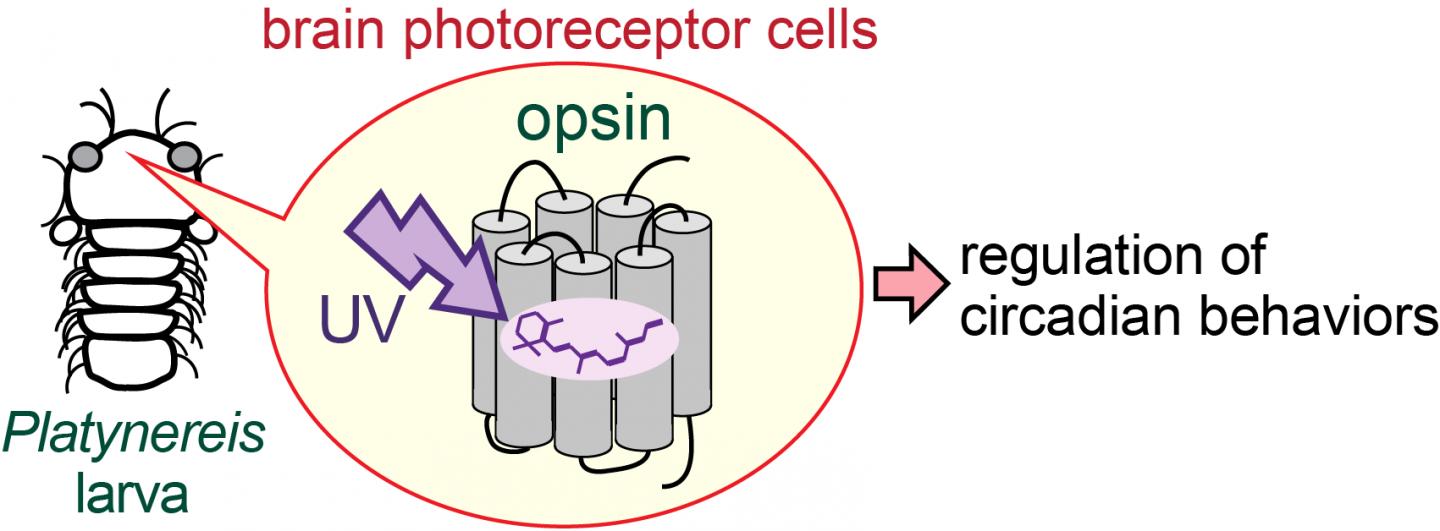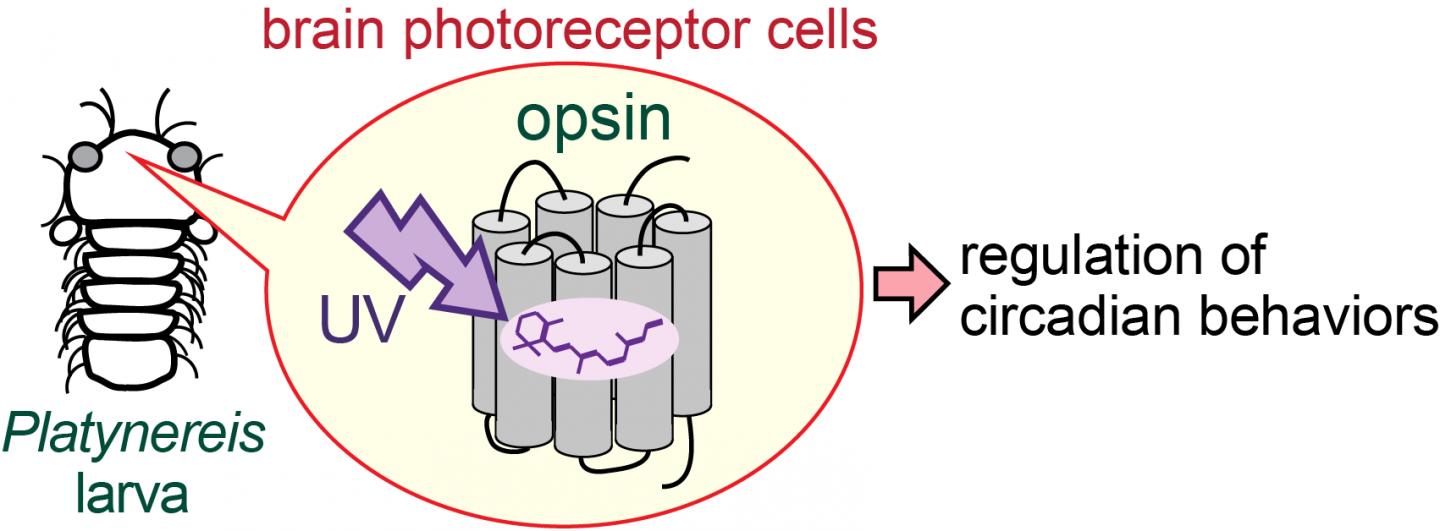
Credit: INSTITUTE FOR MOLECULAR SCIENCE
Researchers at Institute for Molecular Sciences reported that a photoreceptive protein expressed in the brain a marine annelid zooplankton (Platynereis dumerilii) is UV-sensitive. This work was carried out as a collaborative work of Drs. Hisao Tsukamoto and Yuji Furutani (Institute for Molecular Science) with Drs. Yoshihiro Kubo and I-Shan Chen (National Institute for Physiological Sciences). This study was published online in the Journal of Biological Chemistry on June 16, 2017.
Most animals use external light signals for vision and "non-visual" photoreceptive functions, such as regulation of circadian behaviors. In some cases, photoreceptor cells outside eyes are involved in non-visual photoreception. Previous studies have shown that larvae of the annelid Platynereis dumerilii (marine ragworm), which are studied as a zooplankton model, possess photoreceptor cells in the brain, and the cells regulate circadian swimming behaviors. Interestingly, the brain photoreceptor cells in Platynereis express an opsin that is closely related to visual pigments in our visual photoreceptor (rod and cone) cells. Zooplankton show a synchronized circadian movement known as diel vertical migration (DVM), moving upward in water at night and downward in daytime. DVM is probably the largest daily movement of biomass, comparable to human commuting. Since a major cause of DVM is to avoid damaging UV (ultra-violet) irradiation, light-dependent DVM regulation via the brain photoreceptor cells was suggested.
This study showed that the Platynereis opsin can receive and transmit UV signals. Unlike vertebrate visual opsins, the opsin can directly bind exogenous all-trans-retinal. This suggests that the opsin enables the brain photoreceptor cells to detect UV signals, even without the supply of 11-cis-retinal, which is specifically produced in eyes. Mutagenesis analyses identified that a single amino acid residue is responsible for not only UV sensing but also direct binding of exogenous all-trans-retinal. Thus, the single residue is essential for the opsin to achieve the characteristics suitable for UV reception in the brain. Taken together, the opsin possesses ideal properties enabling the brain photoreceptor cells in Platynereis to sense ambient UV signals.
As summarized above, this study revealed molecular basis of the opsin to function as a UV-sensor in the brain of the zooplankton model. Since detection of ambient UV signals should be necessary for DVM, the molecular properties of the opsin are helpful to understand the physiology, ecology and evolution of zooplankton species.
###
Information of the paper?
Journal: Journal of Biological Chemistry
Paper title: A ciliary opsin in the brain of a marine annelid zooplankton is UV-sensitive and the sensitivity is tuned by a single amino acid residue.
Authors: Hisao Tsukamoto, I-Shan Chen, Yoshihiro Kubo, Yuji Furutani.
Publication date: 6/16/2017 (online)
DOI: 10.1074/jbc.M117.793539
Research Group?Institute for Molecular Science (Hisao Tsukamoto and Yuji Furutani), and National Institute for Physiological Sciences (Yoshihiro Kubo and I-Shan Chen).
Financial Supports?
JSPS KAKENHI (#25840122 and #17K15109 for H. T., and #26708002 for Y. F.)
Uehara Memorial Foundation
The Center for the Promotion of Integrated Sciences (CPIS) of SOKENDAI
The Cooperative Study Program of National Institute for Physiological Sciences
Media Contact
Hisao Tsukamoto
[email protected]
81-564-557-453
http://www.nins.jp/english/
Related Journal Article
http://dx.doi.org/10.1074/jbc.M117.793539
############
Story Source: Materials provided by Scienmag





